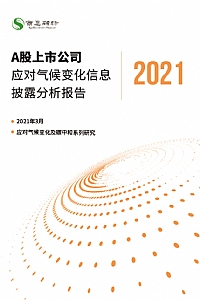
At the 75th Session of the United Nations General Assembly held on September 22, 2020, the Chinese President Xi Jinping officially announced the ambitious goal that "China aims to have CO2 emissions peak before 2030 and achieve carbon neutrality before 2060" . The 14th Five-Year Plan for National Economic and Social Development and the Long-Range Objectives Through the Year 2035, adopted by the National People’s Congress in March 2021, stresses that stronger policies and measures will be rolled out during the 14th Five-Year period to respond to climate change and to achieve the "carbon peaking and carbon neutrality" targets.
Listed companies are a crucial part of the Chinese economy. According to the data on their 2019 annual reports, A-share listed companies boasted a combined revenue of more than RMB 50 trillion, representing over 50% of China’s GDP. However, they will be subject to an increasingly substantial impact of physical and transitional risks arising from climate change. If calculated based on their output, the listed companies will make up a lion share of China’s total greenhouse gas (GHG) emissions, having a direct impact on climate change. As ESG-related factors, including climate change, are drawing greater attention from international as well as domestic capital markets, investors will give more consideration to the potential climate risks of their portfolios when making investments. Therefore, the climate-related disclosures of the listed companies will become a core source of information for investors in decision making.
The A-share listed companies have been on a steady upward trajectory in ESG disclosure over the past few years. However, there are few studies on their climate related disclosures and carbon emission in China. Considering this, this Report focuses on climate-related disclosures of the A-share listed companies to provide a panoramic analysis of their current voluntary climate-related disclosures. This Report is intended to provide reference for regulators, institutional investors, and other stakeholders, and serve a catalyst for more voluntary and comprehensive disclosures of the listed companies.
Major Findings: